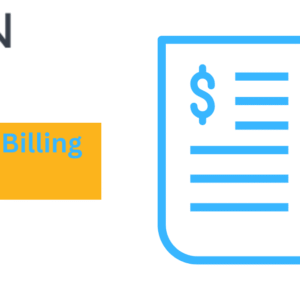Gone are the days when buying a car meant spending hours at a dealership, dealing with aggressive salespeople, and flipping through endless brochures. In 2025, more buyers are choosing to buy cars online, and for good reason. The digital transformation of the automotive industry has made it easier, faster, and more transparent to purchase vehicles without leaving your home.
If you’re considering buying your next car online, this guide will walk you through the benefits, how the process works, trusted platforms to use, and tips to ensure a smooth, secure experience.
Why More People Are Buying Cars Online in 2025
The online car buying trend exploded during the COVID-19 pandemic and hasn’t slowed down since. Here’s why it’s become the preferred option for many:
1. Convenience
You can browse thousands of vehicles, compare prices, check features, and even apply for financing—all from your smartphone or laptop. No need to visit multiple dealerships or wait for a sales appointment.
2. Wider Selection
Online platforms aggregate inventories from dealers nationwide (and sometimes internationally), giving you access to more models, trims, and colors than your local dealership might carry.
3. Transparent Pricing
Most online car sales platforms display upfront pricing, vehicle history reports, and financing options. This transparency reduces the pressure of negotiation and helps you make informed decisions.
4. Home Delivery
Many online car retailers now offer doorstep delivery, allowing you to test drive or complete the purchase from the comfort of your home. Some even offer return windows if you’re not satisfied.
5. Digital Paperwork
Everything from signing the sales agreement to securing a loan can be handled digitally. This drastically reduces time and eliminates paperwork errors.
How the Online Car Buying Process Works
The process to buy cars online is straightforward. Here’s a step-by-step breakdown:
Step 1: Choose a Trusted Online Platform
Select a reliable website or app where you’ll browse for vehicles. Some of the most popular platforms include:
-
Carvana
-
Vroom
-
CarMax
-
Autotrader
-
Cars.com
-
TrueCar
-
Shift
-
Manufacturer websites (e.g., Tesla, Ford, Hyundai)
Step 2: Search and Filter
Use search filters to narrow down your options based on:
-
Make and model
-
Price range
-
Mileage (for used cars)
-
Fuel type (gas, hybrid, EV)
-
Transmission and drivetrain
-
Color and trim
Step 3: Check the Vehicle History (for used cars)
Most reputable sites provide a Carfax or AutoCheck report, which outlines:
-
Previous ownership
-
Accident history
-
Service records
-
Title issues
Step 4: Get a Trade-In Quote (Optional)
Many online platforms will evaluate your current car for trade-in. Enter your car’s details, and you’ll receive an instant offer, which can be applied toward your new purchase.
Step 5: Apply for Financing
Whether through the online platform or your own bank/credit union, you can pre-qualify for financing. Online tools will show you estimated monthly payments and loan terms.
Step 6: Schedule Delivery or Pickup
Once the deal is finalized, you can either have the car delivered to your home or arrange to pick it up from a designated location. Some platforms offer a 7-day return policy, so you can return the vehicle if it doesn’t meet your expectations.
New vs. Used: Which is Better to Buy Online?
Both new and used cars are widely available online, and each has its pros and cons.
Buying a New Car Online
-
You get the latest features, warranty, and zero mileage.
-
Custom ordering is easier—especially with brands like Tesla or Rivian.
-
Prices are typically non-negotiable, but incentives may be available.
Buying a Used Car Online
-
More affordable upfront costs.
-
Certified Pre-Owned (CPO) options offer warranties and inspections.
-
Must verify history and condition—choose platforms that offer return policies and third-party inspections.
Tips for a Safe and Smart Online Car Purchase
If you’re ready to buy cars online, keep these expert tips in mind:
1. Research Thoroughly
Don’t rush. Read expert reviews, compare trims, and understand what features matter most to you—especially safety and fuel efficiency.
2. Stick to Reputable Websites
Only use trusted platforms with verified seller programs and return policies. Be cautious with small classifieds or peer-to-peer deals unless you can inspect the car.
3. Check Return and Warranty Policies
Look for at least a 7-day return period and warranty coverage, especially on used cars.
4. Inspect Upon Delivery
When the car arrives, inspect it immediately for any damage, defects, or issues not disclosed online. Document any discrepancies and contact the seller right away.
5. Avoid Scams
Never send payment via wire transfer or cryptocurrency. Use secure payment gateways provided by the platform. If a deal seems too good to be true, it probably is.
The Future of Online Car Buying
The trend of buying cars online is only going to grow in 2025 and beyond. Automakers are investing in digital retail solutions, and AI-driven platforms are making it easier to get personalized recommendations, financing offers, and vehicle delivery within days.
Soon, virtual test drives using VR or AR, remote diagnostics, and subscription-based ownership models will become the norm. The traditional car lot may soon be a thing of the past.
Final Thoughts
Choosing to buy cars online in 2025 is more than just a modern convenience—it’s a smarter, more efficient way to shop. With access to a vast inventory, detailed listings, financing tools, and doorstep delivery, you’re in full control of the buying process.



